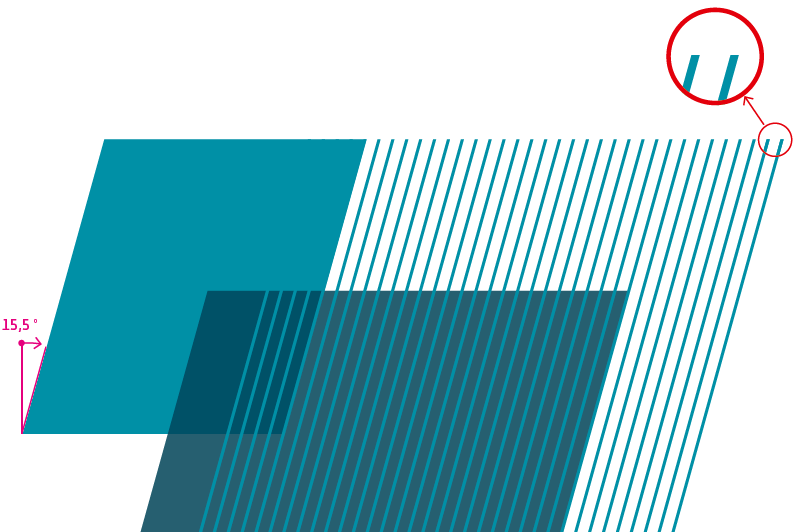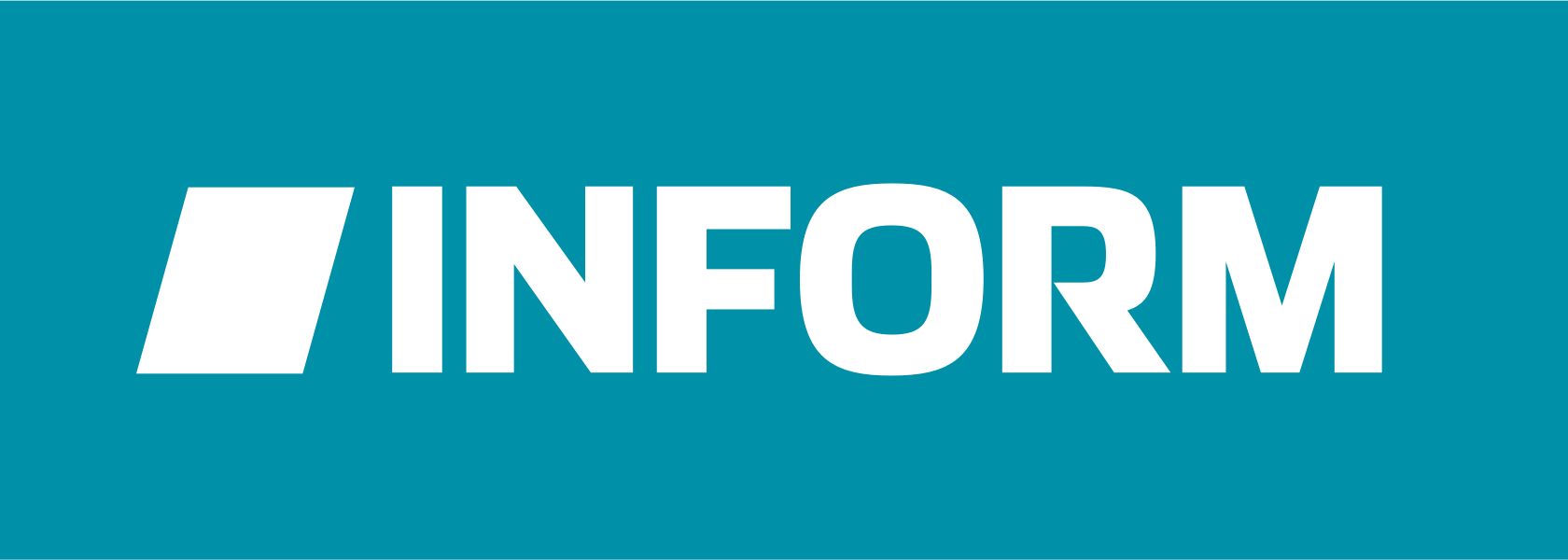DESIGN AND LAYOUT CONCEPT
A holistic design concept has been created based on our brand identity, which shapes our long-term branding.
Introduction
Our design concept is based on a flexible and individual stylistic look that is directly derived from the stylistic elements of our logo.
The basis of the design concept is the figurative mark (rhombus or rhomboid), which can have different sizes and be superimposed on top of one another, be semi-transparent and run to the bleed as a supplemental element for various marketing media.
Note that the proportion ratio of the rhombus, and therefore the tilt of the diagonals as well, must always exactly match those of the figurative mark of the logo.
The fundamentals of the layout can be used in and carried over to all media, from print and digital to physical space.
This design influences the recognition factor of our company’s brand.
It is important to use the elements and image and illustrative motifs flexibly.
Note the additional examples.

Element tectonics
When the rhombus is used purposefully, together with image and text elements, this shape can create interest and also draw the focus to specific content and direct the reader in a particular direction.
The example on this page shows how the shape (rhombus) works together with other elements and white space, as well as image and text elements.
Quantity and proportions of the rhombuses
Multiple rhombuses may be used in combination with one another. Note that the larger rhombuses must run into the bleed and be made slightly transparent (so that two rhombuses do not optically form a new, joined shape).
Smaller, isolated rhombuses must have plenty of space between them and the inform logotype, and must be significantly different in size from the logo in use.
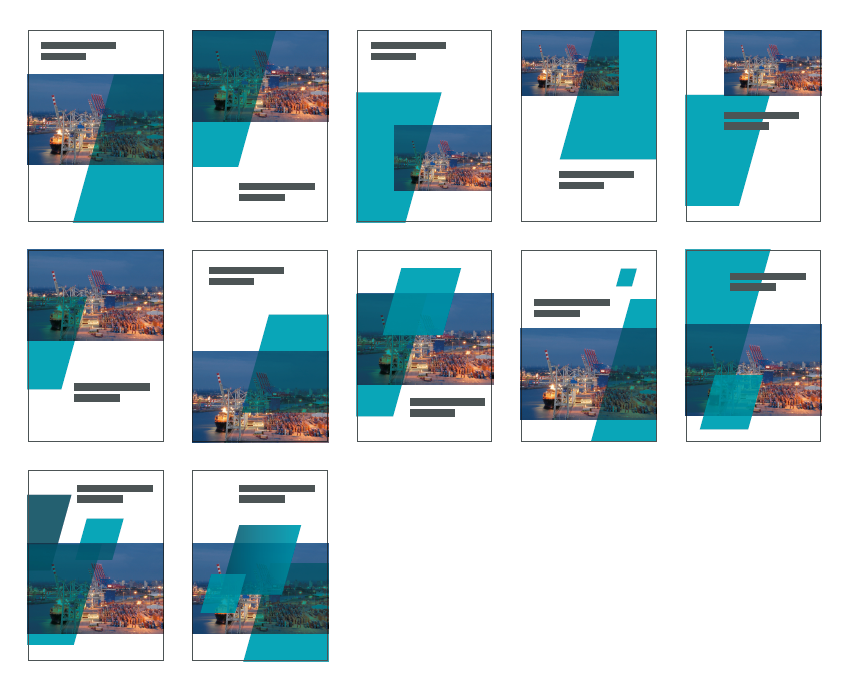
DOs – Guidelines for using the rhombus as a design element
Use rhombuses that run into the bleed.

At least one of the large rhombuses must run into the bleed of the motif or collateral edge.

Rhombuses should be combined.

If multiple, large rhombuses that run into the bleed are used in a motif (e.g. brochure title), they must be combined. Avoid combining more than three rhombuses.

Combined rhombuses must always use transparency.

If three rhombuses are used, they may also be colored with the primary colors (petrol blue, dark green, gray, and gradient) defined by the Corporate Design. The rhombuses should have an opacity of at least 70%-95%.

DON’Ts – Guidelines for using the rhombus as a design element
Avoid using more than three rhombuses in one motif.

Never use more than three rhombuses in one motif. Doing so often means the layout is no longer clear and concise. The rhombuses can quickly look as if they have been randomly placed.
Avoid overlaps with the inform logo.

The space around the logotype must be observed. Furthermore, note that rhombuses may not compete as design elements with the logotype (in terms of size and physical proximity).
Never make the size of the rhombus full format.

Large rhombuses must always run into the bleed with at least one side of the rhombus clearly in the bleed. Do not use a rhombus that fills the entire collateral (edge to edge).
Ensure there is sufficient contrast between individual rhombuses.
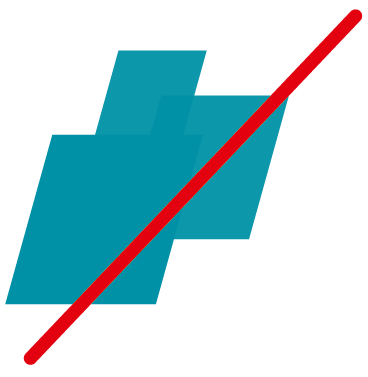
Rhomboids may not be combined to form new, undefined shapes. Individual rhomboids must stand in contrast to one another to remain clearly identifiable as such.
The rhombus may never be used as the background for a text field, eye catcher or button.
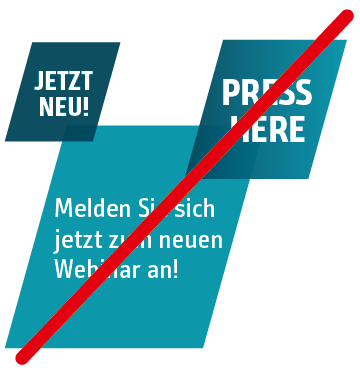
Avoid placing constrained text in a completely visible rhomboid. If rhomboids that run into the bleed on a large-scale are used, text may be placed in them.
Line design element
The diagonal line is derived from the rhomboid as an additional design element. It adopts the angle of the tilted sides of the figurative mark. The lines are flattened off on their upper and lower edges.

IMPORTANT: The diagonal line must not be used alone, but rather always together with other lines. Its width and spacing are defined in such a way that 35 diagonal lines align flush with both sides of the rhomboid if you take a straight measurement of the rhomboid.
